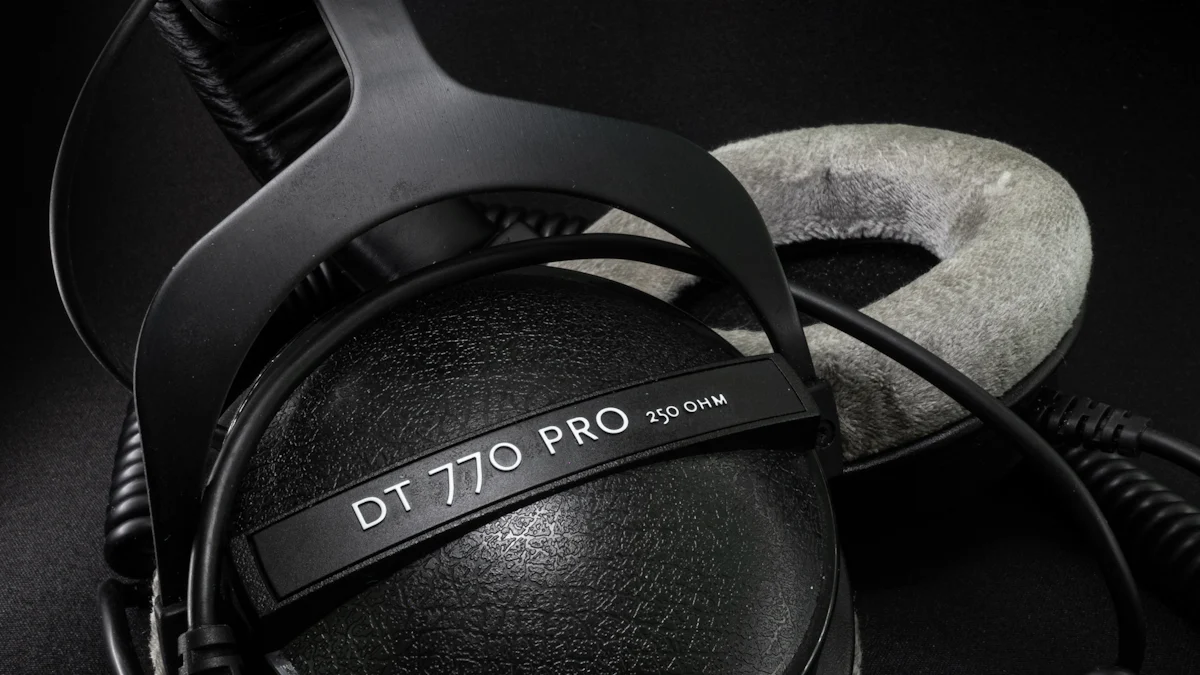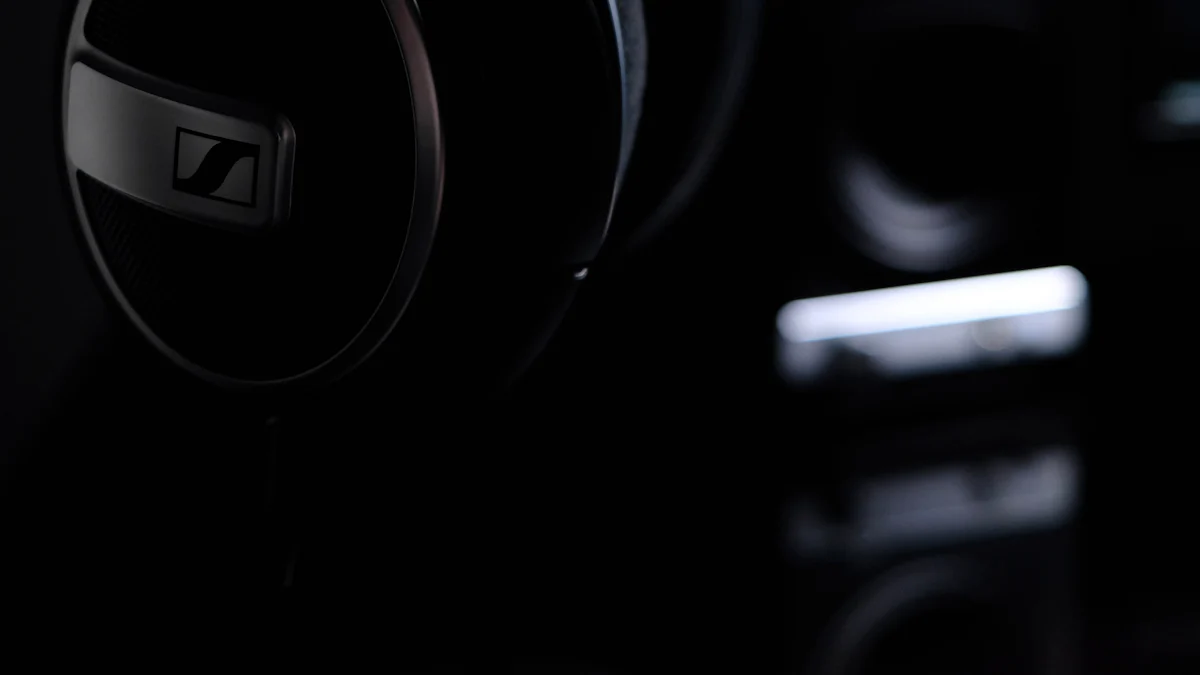Noise-Cancelling Microphone Headset: Pros and Cons

You know how frustrating it can be to have a conversation in a noisy place. A noise-cancelling microphone headset for reducing background noise in calls can be a game-changer. These headsets enhance your speech clarity by minimizing external sounds. Imagine being in a bustling café or a busy office and still having a crystal-clear conversation. They work wonders by reducing sound pressure levels, which can protect your hearing over time. Plus, they help you focus better, whether you're on a call or listening to music. However, like everything, they come with their own set of challenges.
How Noise-Cancelling Technology Works

Understanding how noise-cancelling technology works can help you appreciate the magic behind those quiet moments. Let's dive into the basics and see how these headsets manage to keep the noise at bay.
Basic Principles
Active Noise Cancellation
Active noise cancellation (ANC) is like having a personal sound engineer in your headset. It uses built-in microphones to pick up external sounds. Then, it processes these sounds through noise-cancelling circuitry. This technology creates sound waves that are the exact opposite of the unwanted noise, effectively canceling it out. You might find this especially useful in environments with constant low-frequency sounds, like the hum of an airplane engine or the rumble of traffic.
Passive Noise Isolation
On the other hand, passive noise isolation doesn't rely on fancy electronics. Instead, it uses physical materials to block out noise. Think of it as a barrier between your ears and the outside world. The design and materials of the headset, such as thick padding or snug ear cups, help reduce mid- to high-frequency sounds. This method is simple yet effective, providing a quieter experience without the need for batteries or power.
Technology in Microphone Headsets
Noise-cancelling technology isn't just about headphones; it plays a crucial role in microphone headsets too. Here's how it works:
Microphone Noise Reduction
Microphone noise reduction focuses on enhancing your voice while minimizing background noise. The headset's microphones capture your voice and filter out unwanted sounds. This ensures that the person on the other end hears you clearly, even if you're in a noisy environment. It's like having a conversation in a quiet room, no matter where you actually are.
Sound Wave Inversion
Sound wave inversion is another clever trick used in noise-cancelling headsets. By generating sound waves that are the opposite of the ambient noise, the headset cancels out the unwanted sounds. This technique is particularly effective in reducing consistent noises, allowing you to focus on your conversation or music without distractions.
Pros of Noise-Cancelling Microphone Headsets
Improved Communication
Enhanced Clarity in Conversations
You know how frustrating it can be when background noise drowns out your voice during a call. Noise-cancelling microphone headsets tackle this issue head-on. They filter out unwanted sounds, ensuring your voice comes through loud and clear. Whether you're in a bustling café or a noisy office, these headsets make sure your conversations remain uninterrupted and crystal clear.
Better Call Quality
Ever had a call where you had to repeat yourself multiple times? With noise-cancelling headsets, those days are over. By reducing ambient noise, these headsets improve the overall quality of your calls. You can enjoy seamless communication without the constant need to adjust your volume or ask the other person to repeat themselves.
Enhanced Focus
Reduction of Background Noise
Noise-cancelling headsets create a serene environment by blocking out distractions. This feature is particularly beneficial if you need to concentrate on a task. A study published in the Journal of the Acoustical Society of America found that students with ADHD showed significant improvement in task performance when using noise-cancelling headphones. You can experience a similar boost in focus, making it easier to complete tasks efficiently.
Increased Concentration
Imagine being able to concentrate fully, even in a noisy setting. Noise-cancelling headsets help you achieve that level of focus. The same study mentioned earlier also highlighted that students using these headsets during lectures had an average recall rate of 85%, compared to 65% for those without. This shows how effectively these headsets can enhance your ability to learn and retain information.
Health Benefits
Reduced Stress
Constant exposure to noise can be stressful. Noise-cancelling headsets provide a peaceful auditory experience, helping to reduce stress levels. By minimizing the need to strain your ears to hear over background noise, these headsets create a more relaxed environment, allowing you to focus on what truly matters.
Lower Fatigue Levels
Listening in noisy environments can be exhausting. Noise-cancelling headsets alleviate this fatigue by reducing the effort needed to hear clearly. You can enjoy longer conversations or work sessions without feeling drained. This reduction in auditory fatigue contributes to a more productive and enjoyable experience, whether you're working or relaxing.
Cons of Noise-Cancelling Microphone Headsets
Cost
Higher Price Point
When you consider buying a noise-cancelling microphone headset, the cost might catch your attention. These headsets often come with a higher price tag compared to regular ones. The advanced technology used in active noise cancellation contributes to this increased cost. You pay for the ability to enjoy a quieter listening experience, but it might not fit everyone's budget.
Comparison with Regular Headsets
Regular headsets, which rely on passive noise isolation, tend to be more affordable. They use physical materials to block out noise, making them a cost-effective choice. However, they might not perform as well in environments with low-frequency noise. If you're looking for a budget-friendly option, passive noise-cancelling headsets could be the way to go. But if you need superior noise reduction, you might have to invest more in active noise-cancelling technology.
Battery Life
Need for Regular Charging
Active noise-cancelling headsets require power to function. This means you'll need to charge them regularly. If you forget to charge your headset, you might find yourself without noise cancellation when you need it most. Keeping track of battery life becomes an essential part of using these headsets effectively.
Potential Interruptions
Imagine being in the middle of an important call, and your headset's battery dies. This interruption can be frustrating. While some headsets allow you to continue using them without noise cancellation, others might stop working altogether. Planning your charging schedule can help avoid these disruptions, but it's something to keep in mind when considering noise-cancelling headsets.
Sound Quality
Possible Voice Distortion
Noise-cancelling technology can sometimes affect sound quality. You might notice slight voice distortion during calls. This happens because the headset processes external sounds to cancel them out, which can occasionally interfere with the clarity of your voice. While this isn't a common issue, it's worth considering if sound quality is a top priority for you.
Limitations in Audio Fidelity
Noise-cancelling headsets focus on reducing unwanted noise, but this can sometimes impact audio fidelity. You might experience a slight loss in sound detail, especially if you're an audiophile who values high-quality audio. The trade-off between noise reduction and audio fidelity is something to consider when choosing a headset. If pristine sound quality is crucial, you might want to explore other options that prioritize audio performance over noise cancellation.
Noise-Cancelling Microphone Headset for Reducing Background Noise in Calls

When you're in a noisy environment, having a clear conversation can feel like a challenge. A noise-cancelling microphone headset for reducing background noise in calls can make a world of difference. Let's explore how effective these headsets are and what you should consider before making a purchase.
Effectiveness in Noisy Environments
Noise-cancelling headsets shine in bustling settings. They use advanced technology to filter out unwanted sounds, allowing your voice to come through clearly. Imagine being in a crowded café or a busy office. With these headsets, you can still have a conversation without shouting or straining to hear.
-
Enhanced Focus: Studies show that noise-cancelling headphones improve focus and learning. Students using them in classrooms perform better academically. You can experience similar benefits in work or study environments.
-
Consistent Performance: These headsets excel at reducing constant noises, like the hum of an air conditioner or the chatter of a crowd. They create a quieter space, helping you concentrate on your call.
-
Hearing Protection: By lowering the need to increase volume levels, these headsets protect your hearing over time. You can enjoy longer conversations without worrying about ear strain.
Limitations and Considerations
While noise-cancelling headsets offer many advantages, they also have some limitations. It's important to weigh these factors before deciding if they're right for you.
-
Sudden Noises: Although effective at reducing ambient noise, these headsets might not completely block sudden loud sounds. You might still hear a door slam or a car horn.
-
Battery Dependency: Active noise-cancelling technology requires power. You'll need to charge your headset regularly. Forgetting to charge could leave you without noise cancellation when you need it most.
-
Audio Quality: Some users notice slight voice distortion during calls. The technology processes external sounds, which can occasionally affect clarity. If pristine sound quality is crucial, consider this trade-off.
In conclusion, a noise-cancelling microphone headset for reducing background noise in calls can be a valuable tool. It enhances communication in noisy environments and offers several benefits. However, it's essential to consider the limitations to ensure it meets your needs.
Noise-cancelling headsets offer you significant benefits, but they might not suit everyone. You should weigh the pros and cons to see if they're worth the investment for your needs. They can be a valuable tool for hearing protection and improving communication in noisy settings.
- Evaluate Your Needs: Consider where and how you'll use them. Are you often in noisy environments?
- Assess the Trade-offs: Think about the cost, battery life, and potential sound quality issues.
- Make an Informed Decision: Understanding these factors helps you choose the best option for your lifestyle.
See Also
Comparing Jabra PanaCast 50 And Coolpo AI Huddle PANA
Selecting The Best 360 Degree Speakers: Robot Or Human
Discovering The Perfect Video Conferencing Camera For Meetings
10 Ft USB To Micro USB Cables: Performance Showdown
A Comprehensive Guide To Enhancing Computer Audio Visual Skills
